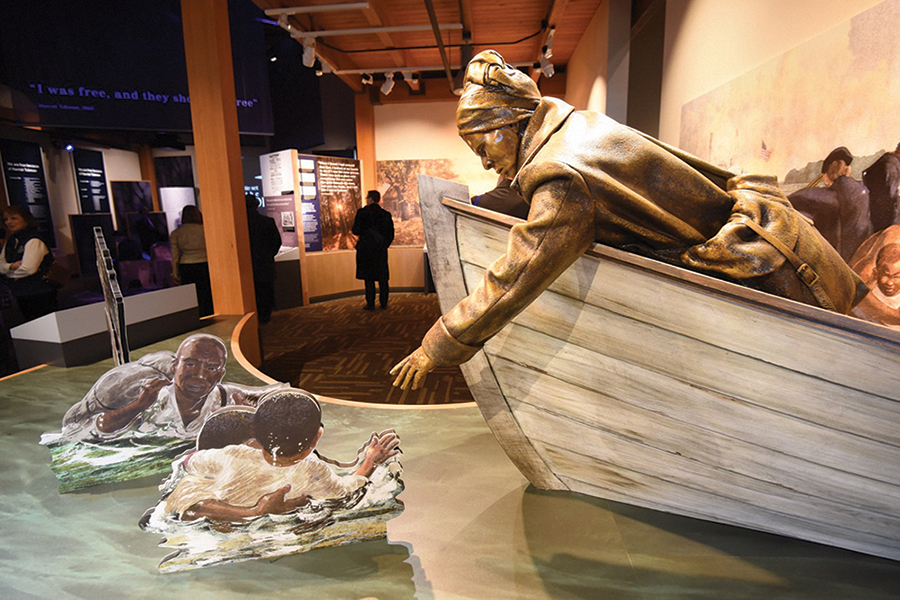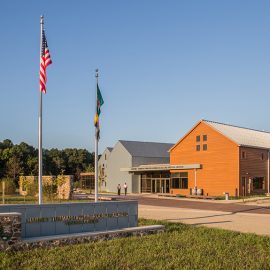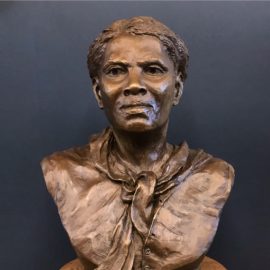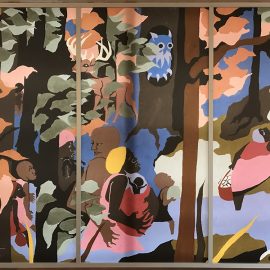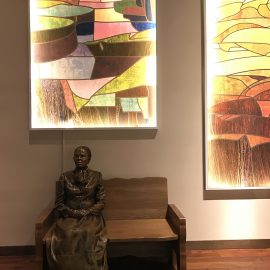Arts & Culture
Guiding Light
The long-awaited Harriet Tubman visitor center opens on the Eastern Shore.
A legend lives on in the low, tidal marsh of the Blackwater National Wildlife Refuge outside of Cambridge on Maryland’s Eastern Shore. There, where runaway slaves once navigated the loblolly pines, wispy strands of cattails, and dark inky water to seek safe passage on the Underground Railroad, now stands an archipelago of barn-like buildings to honor the illustrious life of the network’s most noted conductor.
More than 20 years in the making, the Harriet Tubman Underground Railroad Visitor Center opened in March with a celebration that included Tubman’s descendants, who offered extensive input on the center’s creation. “They still have the tenets of faith and family,” says assistant park manager Angela Crenshaw. “That is our focus here with these exhibits.”
Managed by the Maryland and National Park services, the 15,000-square-foot state-of-the-art visitor’s center serves as a gateway to the Harriet Tubman Underground Railroad Byway, a scenic stretch that runs from the Chesapeake Bay through Philadelphia with stops at local landmarks related to Tubman’s life.
“This is such an important story,” says Alan Reed, president of Baltimore-based GWWO Architects, which designed the center. “We said to ourselves, we want everything—the architecture, the materials, the experience of moving through the exhibits—to somehow relate back.”
The buildings themselves represent different stations along the Underground Railroad, while the exhibits revolve around a symbolic “view north.” Through a barn wood gateway, the exhibit faces toward floor-to-ceiling windows that overlook a thick forest to the north, before taking tangled twists and turns, similar to those that runaway slaves likely faced during their escapes.
“It was never a simple journey,” says GWWO senior associate Chris Elcock. “In the exhibits, you find yourself bouncing around, and when you get to the end, you go back the way you came, because that’s what Harriet did. But you’re going to be changed. Each time she returned, she had new information, so she could be a better conductor.”
The exhibits span Tubman’s courageous life, from her childhood as a slave in Dorchester County to her extraordinary efforts in the Civil War to her late-life role in the women’s suffrage movement. There’s a wall honoring some of the 70 people she helped rescue, and a mural featuring an iconic illustration from Jacob Lawrence’s 1968 children’s book, Harriet and the Promised Land. Throughout, slavery’s terror stands in stark contrast to the region’s natural beauty and Tubman’s unwavering sense of faith.
One of the most serene yet stirring elements is a life-size statue of Tubman, who will eventually replace Andrew Jackson on the front of the $20 bill, making her the first female and African-American on American currency. She is seated on a church bench beneath faux stained glass windows and a quote by Frederick Douglass, another Maryland slave turned abolitionist. “The midnight sky and silent stars have been the witnesses of your devotion to freedom and your heroism,” he wrote in an 1868 letter to Tubman.
Out here, beneath the pines, we now bear witness, too.
